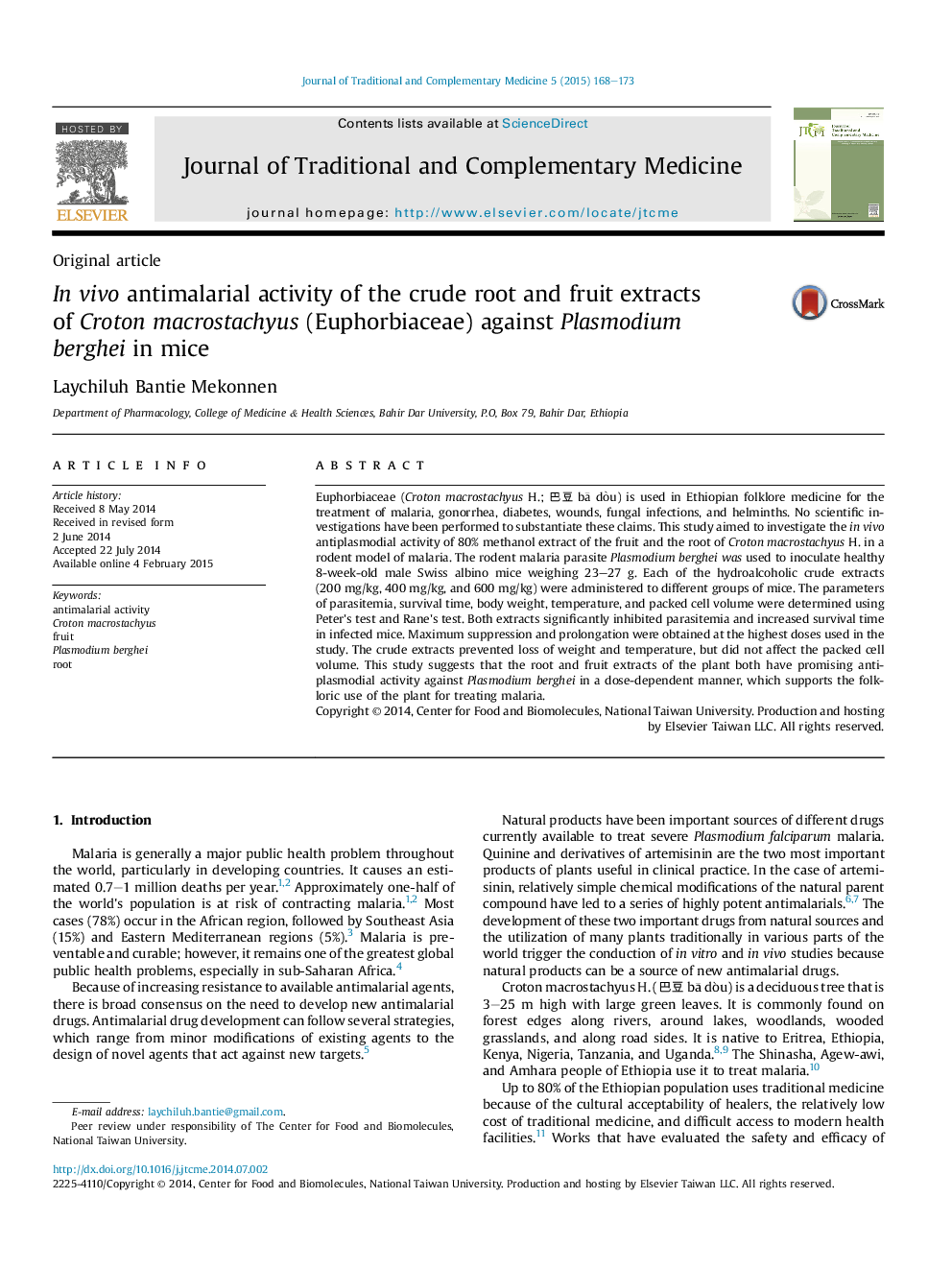| Article ID | Journal | Published Year | Pages | File Type |
|---|---|---|---|---|
| 3099764 | Journal of Traditional and Complementary Medicine | 2015 | 6 Pages |
Euphorbiaceae (Croton macrostachyus H.; 巴豆 bā dòu) is used in Ethiopian folklore medicine for the treatment of malaria, gonorrhea, diabetes, wounds, fungal infections, and helminths. No scientific investigations have been performed to substantiate these claims. This study aimed to investigate the in vivo antiplasmodial activity of 80% methanol extract of the fruit and the root of Croton macrostachyus H. in a rodent model of malaria. The rodent malaria parasite Plasmodium berghei was used to inoculate healthy 8-week-old male Swiss albino mice weighing 23–27 g. Each of the hydroalcoholic crude extracts (200 mg/kg, 400 mg/kg, and 600 mg/kg) were administered to different groups of mice. The parameters of parasitemia, survival time, body weight, temperature, and packed cell volume were determined using Peter's test and Rane's test. Both extracts significantly inhibited parasitemia and increased survival time in infected mice. Maximum suppression and prolongation were obtained at the highest doses used in the study. The crude extracts prevented loss of weight and temperature, but did not affect the packed cell volume. This study suggests that the root and fruit extracts of the plant both have promising antiplasmodial activity against Plasmodium berghei in a dose-dependent manner, which supports the folkloric use of the plant for treating malaria.
Graphical abstractFigure optionsDownload full-size imageDownload as PowerPoint slide
